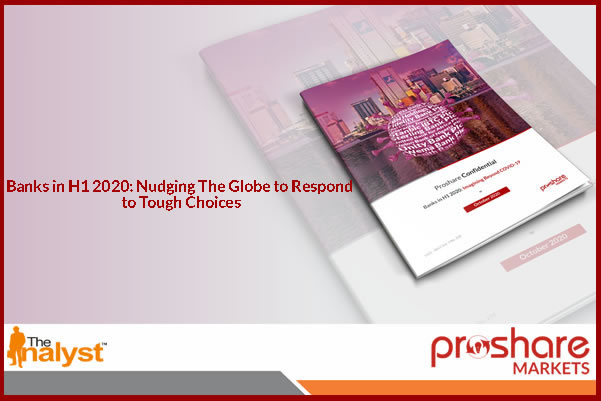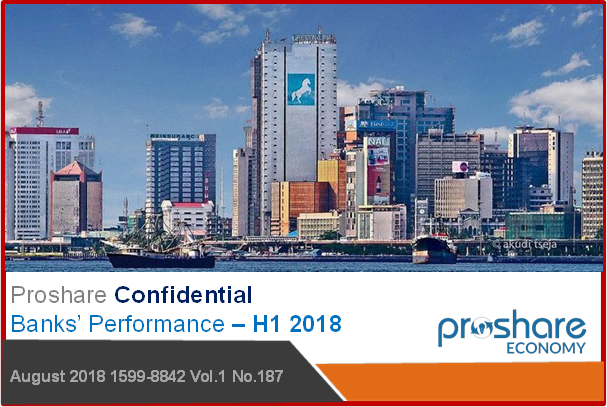Historical trends of CAR in Listed Banks
The distribution of qualifying capital between Tier 1 and Tier 11 capital by the Nigerian banking industry has been outperforming the BCBS recommendation in terms of minimum CAR and the proportion of Tier 1 capital.
In terms of minimum CAR, the trend of individual CAR of banks listed on the Nigerian Exchange Limited has been a mixed bag over the last five years. Some banks have recorded growth in their CAR while others saw a slight decline. Among the banks designated as top tier banks, GTCO, UBA, and Zenith top the chart of annual CAR within the last five years (2017-2021) with CAR of between 19% to 27% while other top tier banks have CAR th at oscillates between 15.5% to 20.06% within the period. Stanbic IBTC and Fidelity led the other banking category with annual CAR of between 16% and 24.70% while Unity bank recorded negative CAR as high as -201.59% in 2019 and -86% in 2021 due to the bank’s negative shareholders’ funds (see chart 48 below).
Chart 48: Historical CAR of Listed Banks between 2017 – 2021
Source: Banks’ Financial Statement
Meanwhile, UBA, Access, and GTCO had the highest CAR at 24.90%, 24.52%, and 23.83% in 2021 respectively. Other banks that had CAR that outperformed the SIBs requirements were Stanbic IBTC at 21.12%, Zenith at 20.66%, Fidelity at 20.11%, and FCMB at 16.24%. Albeit all the banks recorded CAR that was largely in compliance with the regulatory capital requirements for their respective category in 2021 except Unity bank with a negative CAR.
In terms of the composition of qualifying capital, the proportion of Tier 1 capital in the total qualifying capital of each bank-SIBs and others has also remained well above the BCBS recommendation for SIBs. On average in 2021, the proportion of Tier 1 capital in the total qualifying Capital for the Nigerian banking industry averaged about 83%, which was higher than the 75% threshold for SIBs. On an individual basis, only ETI had Tier 1 capital that was lower than the 75% threshold at 67% (see table 28 below).
Table 28: The Capital Adequacy Ratio of Listed Banks in 2021
Banks' Capital Adequacy Ratio in Context
The devastating effects of the low capitalization and the financial crisis of 2008 on the banking industry left some harsh lessons for the Nigerian banking industry regulators. The crisis resulted in the loss of fortunes for the depositors, shareholders, investors, government, and the economy. This was predicated on the roles of the banking industry as a financing and payment infrastructure for the economy and a channel for transmitting monetary policy to the real economy. It thus became evident that the sustainability and safety of the economy depend on the banking industry whose health and safety also depend largely on its capital adequacy.
Capital adequacy is a situation where a financial institution’s capital level is enough to absorb its losses and asset shortfalls, i.e., having sufficient capital for current operations and future growth. The capital adequacy ratio then measures the sufficiency, soundness, and safety of the bank. It is an important metric of a bank’s risk exposure as its risk-weighted component incorporates credit risk, market risk, exchange rate risk, and interest rate risk. Essentially, the capital adequacy ratio has direct implications on banks’ riskiness and macroeconomic indexes. The ratio has direct implications for the banks’ riskiness as banks’ capital adequacy requirement is essentially a scale between capital and risk assets. Similarly, the ratio has significant implications on the deposit-asset ratio since the larger the ratio of capital to assets (or capital to deposits) the safer the customers' deposits. The imposition of a minimum capital adequacy standard on banks strengthens the safety of deposits and the soundness of the banking system.
At the macro level, the implication of capital adequacy requirement on macroeconomic stability is also founded on the fact that the framework for achieving a stable financial system and macroeconomic environment is a regulatory policy that is preventive of instability. In cases where the system is on the verge of instability, the regulatory policy is remedial. The basic tenet of the relationship is that the banking capital adequacy requirement is a policy tool for dousing excessive activities, ensuring sustainability, and maintaining financial stability. Therefore, sentiments and subjectiveness cannot be allowed to have their way for the sake of financial stability.
Meanwhile, there is a growing trend of systemically important banks operating under a holding company structure in the country. This increasing relationship between the banking industry and the non-bank financial intermediary increases the level of systemic risks in the industry and underpins the possibility of financial disruption in the event of a weak banking system. Hence, the capital requirements of such banks must be subject to higher requirements and stricter subjective judgment by the regulator.
Calibrating banks based on their systemic importance to the financial system and applying higher minimum capital adequacy ratios thus reduce the possibility of insolvency in the financial system and promote the stability and efficiency of the system. To achieve the required capital adequacy, the regulators essentially require increasing the qualifying capital, strengthening the bank’s balance sheet, or shrinking the risk assets on the bank’s books.
Basel 111 and the New Look of Bank Capital
Taskinsoy's admonition may sound reasonable and should, but in finance, the latitude for risk-taking becomes constrained by the compelling need for institutional safety. In this context, global banking oversight has tightened the regulatory requirements on the riskiness of bank capital.
Since 1975 global financial regulators have taken an interest in the size and nature of bank capital relative to the size of their balance sheets and have come up with different guidelines from Basel I through Basel II and onto Basel III. Basel III appears to have lagged global financial market evolution as analysts have pushed for a Basel IV.
The key elements of Basel III that have led to a tightening in bank capital requirements include:
- Basel III retained the proportion of core capital banks should hold in their capital stack but increased the proportion of tier 1 capital. Basel II required that banks hold 8% of their capital as tier 1 (equity and declared reserves) and tier 11 (undisclosed reserves and unsecured subordinated debt instruments) as a proportion of risk-weighted assets (RWA). In comparison, Basel III retained this to 8%.
- Basel II expected that 50% of the 8% held in bank capital as a proportion of RWA should be tier 1 capital; Basel III raised the proportion to 75% of the 8% capital as a percent of RWA.
- Basel II allowed for a tier 111 capital layer, but Basel III eliminated this riskier capital category
- Basel III introduced a countercyclical capital buffer or rainy-day capital to serve as an additional cushion.
- Basel III recommends that banks could see an imposition of 0% to 2.5% additional reserve during periods of economic expansion to create a cushion for economic reversals and potential institutional stress.
- Basel III's liquidity coverage ratio requires that banks hold a "sufficient reserve of high-quality liquid assets (HQLA) to allow them to survive a period of significant liquidity stress lasting 30 calendar days."
If a countercyclical buffer reserve of 2.5% is summed with a capital requirement of 8% of RWA, a 10.5% reserve could be demanded of banks. The goal is to ensure that banks would have enough reserves and capital to absorb the shock during times of economic downturn (as was experienced with COVID-19 between 2020 and 2021). Countercyclical buffers would entirely involve tier 1 capital.
With the rise in decentralized finance (Defi) and open banking, the race to capital rigor has sped up. Analysts are now calling for a Basel IV that looks a the digital evolution of banking and would require a tighter regulation of bank capital related to digital assets and liabilities. For example, would CBN's digital currency (CBDC) count as tier 1 capital? And would any other digital asset based on blockchain technology with appropriate encryption and protection qualify for tier 1 bank capital?
William Coen, former Secretary-General of Basel Committee, said in 2016 that he so no reason for a further Basel Roman numeral as the tweaking of Basel III were simple refinements. Whether agreed that the refinements deserve another Roman numeral or just modifications of Basel III, the important thing is that the rules on capital will tighten further, especially concerning a review of the calculations of risk-weighted assets.
In this regard, technical changes will occur, including:
- Improving the earlier accords' standardized approaches for credit risk, credit valuation adjustment (CVA) risk, and operational risk. These rules lay out new risk ratings for various assets, including bonds and real estate. Credit valuation risk refers to the pricing of derivative instruments.
- Constraining the use of the internal model approaches used by some banks to calculate their capital requirements. Banks will generally have to follow the accords' standardized approach unless they obtain regulatory approval to use an alternative. Internal models are faulted for allowing banks to underestimate the riskiness of their portfolios and how much capital they must keep in reserve.
- Introducing a leverage ratio buffer further limits the leverage of global systemically important banks (banks considered so large and important that their failure could endanger the world financial system). The new leverage ratio requires them to keep additional capital in reserve.
- Replacing the existing Basel II output floor with a more risk-sensitive floor. This provision refers to the difference between the amount of capital that a bank would need to keep in reserve based on its internal model instead of the standardized model. The new rules would require banks to hold capital equal to at least 72.5% of the amount indicated by the standardized model, regardless of what their internal model suggests.
Basel IV should have started on Jan. 1, 2022, but banks have five years to comply. Besides, most banks are yet to even abide by the rules of Basel III.
Downloadable Versions of Tier 1 Banks Report (PDF)
1. Executive Summary: Nigeria’s Banking Industry: The Case for Redefining Tier 1 Banks - May 28, 2022
2. Full Report: Nigeria’s Banking Industry: The Case for Redefining Tier 1 Banks - May 28, 2022
 Lagos, NG • GMT +1
Lagos, NG • GMT +1











 957 views
957 views































 Sponsored Ad
Sponsored Ad
 Advertise with Us
Advertise with Us









